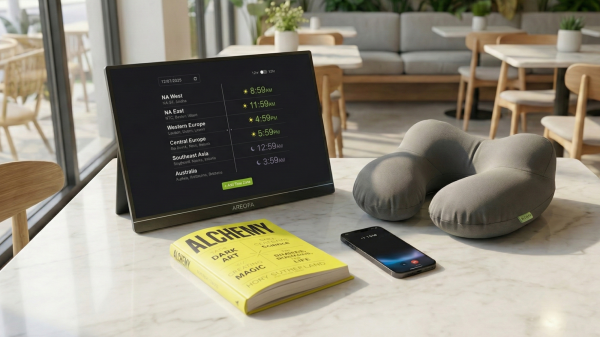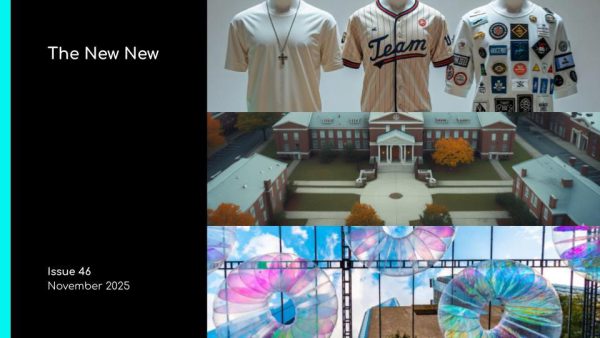Pharma Mobilizes
Marketers continue to leverage the power of mobile devices, but have learned it’s not all about the apps.
The following are select quotes pulled from the original piece.
For the feature story in MedAdNews December 2017 magazine issue, I talked extensively with Christiane Truelove about the role of mobile marketing, email, technology, and content for pharma marketers.
Here is a snippet from our conversation:
From old technology to new Sometimes the simplest solutions in mobile can work the best. According to Brent Turner, senior VP of Solutions at Cramer, when it came to creating a mobile-optimized patient-interactive component for client Sanofi’s website for the multiple sclerosis drug Aubagio, the answer was email. For a medical device company seeking to reach out to customers using the company’s extranet, the answer was targeted native ads.
These solutions may sound old-fashioned, but Turner argues that they do the job precisely because they meet the needs of the customers, providing information in a manner that they are apt to use.
“Everybody has been buzzwording on content marketing in the last few years, and now the shift there is it’s not about content, it’s about value,” Turner says. “Especially if we’re thinking about the whole customer experience, we are looking at how do we provide value? That layers into why are we saying e‑mail, or native ads? Because they’re more content oriented, and we are saying, ‘We are in a state where we can now connect with you, you being a patient, you being an economic buyer, we can now connect with you at diff erent points in your experience with us and provide value at those points.’”
In non-pharma marketing, according to Turner, there has been a resurgence of older solutions such as newsletters. “You have brands like MIT Technology Review, they’re launching newsletters left and right,” he says. “We’re seeing bloggers shifting to newsletters, we’re seeing newsletter platforms rise.”
Podcasts are also popular right now and those are mobile in their native state, Turner says. “They’ve all been around forever, but two of the most trendy things right now is to have a podcast and to have a newsletter,” he says.
The advantage of both mediums is “they are where you are,” Turner says. “If you’re a commuter on a train, you’re on your phone. If you’re watching TV, you’re on your phone. We just live with a phone in hand, at all times. And if you’re on a phone, you don’t want to do lots of clicking. It’s nice to have a newsletter curate the world for you.
Podcasts and newsletters are a curated set of value. Part of the value they provide is by curating, and part of it is to provide a narrative, editorial, journalism, providing you a view from a trusted brand or voice that you want to engage with.”
Pharma could find value in podcast series recorded at conferences such as ASCO, Turner says. “If [the recording] was done in the back of the booth, it would be like fi reside chats. There would be 50 people, or even 10 people, who have come by the booth to watch it, so now you’re getting extra content, you’re getting more viewers, you’re getting a booth draw, so its becoming an interesting multitenant strategy.”
According to Turner, although there was considerable buzz about virtual reality, or VR, going into 2017, the biggest challenge has been the scale of adoption. “E‑mail, everybody who has a phone has some version of e‑mail or messaging; everybody who has a phone has a web browser,” he says. “Most people have Facebook. Not a lot of people have X app they have downloaded that does the augmented reality thing, with x headset that they could put their phone into, or they’ve spent another $400 to go buy an Oculus. You start to get a funnel challenge, where some of these very interesting technologies that are very compelling just don’t have the mass adoption to be worth anything more than an innovation-esque investment that gets you excited.”
VR does work very well in live settings, such as meetings, conferences and roadshows, Turner says. “Two yeas ago, most of our clients who were playing with virtual reality were doing it in a booth activation, at a trade show or a roadshow,” he says.
Cappola says Klick has had VR and augmented reality at conferences. “The more that becomes commonplace and accessible when you don’t have a booth sitting there, the more of it people will want,” she says.
Klick’s Sensei Labs created a virtual reality experience that simulates the eff ects of having Parkinson’s disease. “I think that’s one of the more powerful things the healthcare space can use, to help create empathy and understanding and create messaging for needs, which will hopefully help patients in the future,” Cappola says.
And when it comes to meeting with HCPs, virtual reality can make every pharma rep meeting into its own roadshow. Agency experts say their clients are always looking for new ways to bring information, data, experience, or understanding of symptomology to HCPs. VR at present “is completely at a scale that is effective on the HCP side” through conventions and congresses and enhanced detailing opportunities.
“That’s gotten a lot of excitement from our clients right now, who want to know how can we take an in-office meeting to the next level, how can we get beyond the fl at data and really build an experience around that. So we’ve been putting a lot of effort into incorporating that into in-office materials.”
According to Tamayo, rather than using VR to tell a patient story to a physician, it has been more effective in telling a science story. Virtual reality demonstrations of how an antibody protein slots into a cell may not seem that thrilling, but clients are demanding more of this type of material. “It doesn’t sound all that intriguing to us, but when we put these kinds of concepts in front of [physicians], they respond with a level of glee that’s kind of surprising,” Tamyao says.
By using VR, a rep can switch from educating an HCP – “which they hate” – to “allowing them to consume the information in the way that they want, which is how they prefer to be communicated with, particularly in offi ce settings,” according to Tamyao.
HCPs are not always going to take a pharma rep’s word for it on the science but by using VR to change the parameters of how the science is presented, “we’ve done two things,” Tamayo notes. “We’ve earned extra time with them that we wouldn’t get if we were presenting printed items or even simple animation. We’re also helping them decide for themselves if what we’re saying is relevant to their patients if they were considering changing their prescribing habits.” Another technology that is expected to shape pharma’s mobile marketing strategies is voice.
As HCB Health Chief Innovation Officer Robert Palmer explains in “Siri Speaks: The Human Behind the Voice of Siri – and How Marketers Can Benefit from Voice Recognition Technology” on page 30, the new enterprise chatbot solutions that have arisen since the launch of Siri – such as Amazon’s Alexa – promise “revolutionary change in the ways we communicate, work, perform specific tasks, and even browse the Internet.”
“Consumers are now conditioned to interact with their smartphones and other devices in a less intimidating and more intuitive way,” Palmer says. “Marketers now have the ability to use this technology to remove the psychological and emotional barriers of customer interactions with machines that rely on hunt-and-peck technologies that date back to the dawn of the Web. And healthcare’s regulatory barriers can be overcome with the intelligent structuring of how the voice-activated interactions return information.” According to Tamayo, “If our clients three years ago were telling us we needed a content strategy, and last year they needed a branded app, this year they’re wondering what their Alexa skill needs to be. We’re still fairly early on in that wave and we’re having a lot of fun with it, but again we’re trying to what makes sense for physicians and patients.”
In other industries, voice is “becoming as commonplace as search was years ago” in sales, Cappola says. “For pharma, I think it’s going to be less about true sales and it’s more about the ideas of how to leverage and use that to enhance the experience.”
Among other things, interactive voice technology offers simplicity, having faster and clearer answers, and being able to multitask, Tamayo says.
“And the doctor’s offi ce is in such a ripe position to be taking away complexity,” with voice technology allowing a physician to “ask Alexa” for the answer to a clinical question or for the dictation of a prescription to the EHR during a patient exam, he says. “For patients, it’s going to be a little bit diff erent, it might be something that lasts over time, such as building in reminders. It could be as simple as, ‘Alexa, did I take my pill today?’”
According to Cappola, if the system is a learning one and can sync with other systems properly, even asking about the weather could create a response such as, “‘Ah, the weather is probably going to be like this. Bring a jacket. You should also probably bring your inhaler or remember to take your allergy medicine.’”
These voice systems could also be used for keeping a log of illness episodes, to be sent or shared even in a real-time fashion to their physician, Cappola says. And VR could possibly not only bring sight and sound, but touch as well to the detailing experience.
According to Turner, Cramer is currently one of three agencies piloting the use of technologies from a UK-based company called Ultrahaptics. The company is developing a technology called ultrasonic haptics, which uses sound waves to create objects that can be felt in midair. The company’s website talks about “invisible buttons and dials that you feel when you need them, through to tangible interfaces that track your hand.”
As sci-fi as that sounds, there are very real ways healthcare can use this technology, Turner says.
“Say for example, you’re doing a medical device demonstration … it’s a suture, and you want them to feel what it’s like when there’s resistance,” he explains. “Not just hold it in your hand, but through VR, you’re in a surgery. The tech is still new, but it’s another one of those experiential things where we can create a moment, especially in a high-value sales meeting or a trade show or a road show, where we can set this up and say, ‘Let me blow your mind.’ But at the same time, give you a meaningful sense of what the product or offering can do for your patients.”
by
MedAdNews





